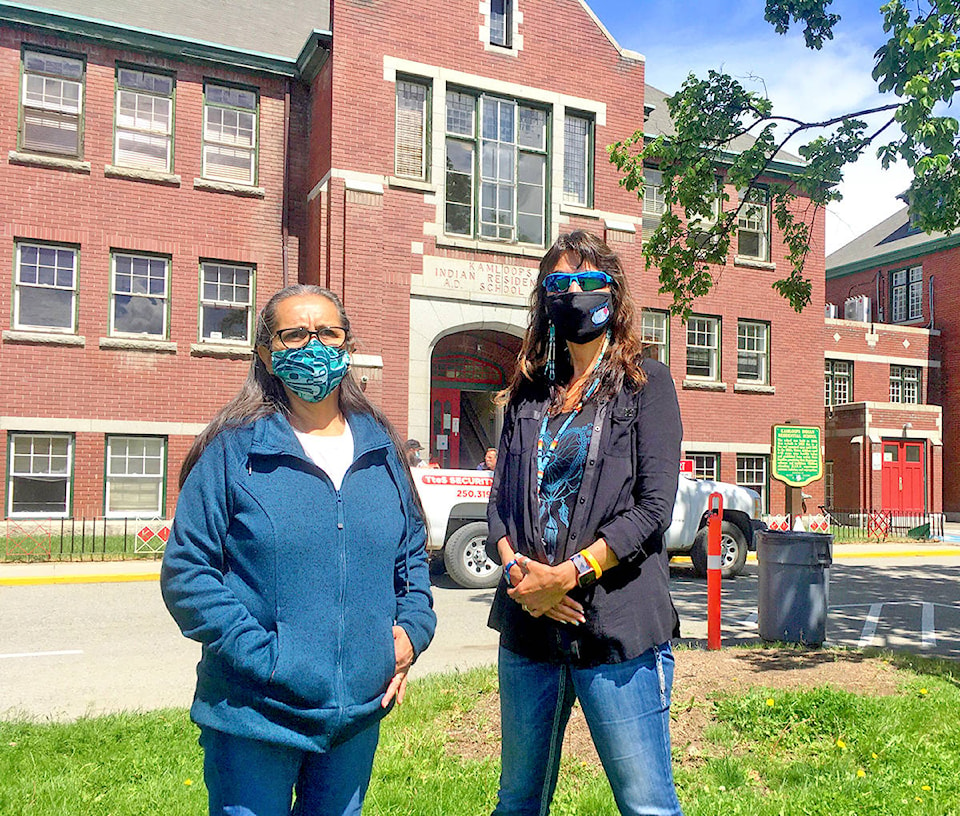When the discovery of the remains of 215 Indigenous children at the Kamloops Indian Residential School was confirmed by the Tk’emlúps te Secwépemc First Nation, Wanda Nystoruk’s social media was flooded with grief and outpourings of support.
Within a day, people had mobilized and organized a drum ceremony to be held in Kamloops at the KIRS arbor to honour the 215 children.
“I received word at 9:02 a.m. and I knew I had to be there. I messaged cousins and our Chief to be there at 11 a.m., May 28, the day after the announcement,” said Nystoruk, who says she was devastated by the discovery as her mother was a residential school survivor.
“My mother, who was born in 1943, was taken away at a young age, four or five, to the KIRS. She was there for six or seven years,” she says. “Many of the survivors who attended said they knew the children that they were told had run away, but the children never made it home. This is so sad.”
Nystoruk said the importance of being a part of the ceremony filled her heart. “I am not a drummer and singer, and I don’t own my own hard drum. I thank my cousin for being able to borrow one for me.”
A huge crowd had gathered for the ceremony, many in orange shirts.
“Every child mattered,” said Nystoruk, “We made a circle and started with ‘The Welcome Song’, followed by ‘The Honour Song’. I had tears in my eyes as the drums and voices resonated through the arbor. It was an extremely powerful and meaningful feeling to be doing this at the place where they tried to destroy our culture.
“We did the men’s and women’s warrior song. The words and beat seemed to come to us naturally there amongst our ancestors.”
She notes one of the speakers was a ‘Knowledge Keeper’, who said: “Imagine how happy they are to finally be found.”
“I tried to see a positive amidst all the emotions – knowing they could hear us drumming and singing for them,” Nystoruk says.
“All the KIRS survivors in attendance were then called to come into the circle and sit so we could surround them and honour them with songs, the honour song and a bear dance. I sat and talked with many, including Terry, who attended the school the same time as my mom.”
After the ceremony, Nystoruk and her cousin Georgina Russell walked over to the front doors of the former school to see the monument that has been placed there.
“My cousin and her mom are both survivors of KIRS. We talked much after the ceremony,” she says. “We are a strong and resilient people. I was so proud to be a part of this.”
For four days, the people returned to the KIRS to perform and attend a drum ceremony held around a sacred fire which is always done “after the loss of someone.”
“I also stood amidst the 215 lights placed in front of the KIRS buildings that have been lit for each of the children,” she says. “This hurts my heart to live in a world where this could happen.
“My heart goes out to all the lost families. Mothers, fathers, grandparents – lost.
“This history needs to be learned by all, and to be shared, and people educated to stop the ignorant and racist beliefs. We never want to have to hear or be told, ‘they should just get over it’.”
Nystoruk says there is great power in the words: acknowledge, understand, empathy, and respect.
“My hope is for our people, my generation, to now be able to go forward and heal in a changed world.”
___________________
Like us on Facebook
